Classics for All Recommended Resources A-level
A-Level (KS5) Latin
Language, Literature (background info)
 AS and A Level Set-Text Commentaries from Cambridge University. If you are studying Latin in Years 12 and 13 and want to get some ‘university tuition’ on your set texts, check out the following commentaries on Cicero, Tacitus, and Virgil, using the links below. They are all published by Cambridge-based Open Book Publishers and available free to read online via their website and on Google Books: ; Cicero, Against Verres, 2.1.53–86. Latin Text with Introduction, Study Questions, Commentary and English Translation; Tacitus, Annals, 15.20-23, 33-45. Latin Text, Study Aids with Vocabulary, and Commentary; Virgil, Aeneid, 4.1–299. Latin Text, Study Questions, Commentary and Interpretative Essays
AS and A Level Set-Text Commentaries from Cambridge University. If you are studying Latin in Years 12 and 13 and want to get some ‘university tuition’ on your set texts, check out the following commentaries on Cicero, Tacitus, and Virgil, using the links below. They are all published by Cambridge-based Open Book Publishers and available free to read online via their website and on Google Books: ; Cicero, Against Verres, 2.1.53–86. Latin Text with Introduction, Study Questions, Commentary and English Translation; Tacitus, Annals, 15.20-23, 33-45. Latin Text, Study Aids with Vocabulary, and Commentary; Virgil, Aeneid, 4.1–299. Latin Text, Study Questions, Commentary and Interpretative Essays
A-Level (KS5) Greek
Language, Literature (background info)
A-Level (KS5) Ancient History
 Classics for All have commisioned the excellent Matt Hudson from Nelson & Colne College to help create a suite of teaching resources based on his own teaching notes. Look out for resources on the Greek and Roman Period Studies, the Politics and Culture of Athens, and Ruling Roman Britain coming this summer.
Classics for All have commisioned the excellent Matt Hudson from Nelson & Colne College to help create a suite of teaching resources based on his own teaching notes. Look out for resources on the Greek and Roman Period Studies, the Politics and Culture of Athens, and Ruling Roman Britain coming this summer.
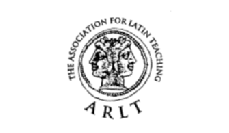 ‘Getting started in ancient history’ available in the JACT Ancient History Notes on the Teachers’ section of the ARLT website(free log-in required from ARLT for teachers). Info.
‘Getting started in ancient history’ available in the JACT Ancient History Notes on the Teachers’ section of the ARLT website(free log-in required from ARLT for teachers). Info.
Greek period study: Relations between Greek States and between Greek and Non-Greek states, 492–404 BC
AIE resources illustrate the relevance of ancient Athenian inscriptions, especially those of the classical period (the fifth and fourth centuries BC, c. 500-300 BC), to pre-18 education in the UK and beyond. They aim to support teachers who wish to introduce inscriptions into their teaching as a way of captivating their students’ imagination and fostering enthusiasm for the ancient Greek world.
These resources, consisting of teachers’ notes and slides for classes, underline the textual and visual potential of inscriptions for those engaged with learning about ancient Greek history and civilisation. The idea of an inscription being carved and read “in real life” is a way of fostering the curiosity of students about the past. Accordingly, through inscriptions, learners benefit from the bringing to life of the ancient world, perhaps in a way that helps it seem less abstract and initially less complicated. At the same time, they hope that introducing students at pre-18 level to inscriptions will encourage them to explore ancient source material of their own accord, and will help them to ‘bridge the gap’ into University study if they chose to pursue it. In their Introduction to AIE for Teachers resource you will find more ideas about using inscriptions in the classroom. They also offer a set of slides which introduce learners of all ages to Greek inscriptions: see Introduction to ancient Athenian inscriptions.
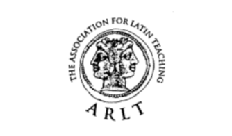 Notes for teachers on Democracy, Greece in Conflict (460-403 BCE), and the Culture of Athens available in the JACT Ancient History Notes on the Teachers’ section of the ARLT website (free log-in required from ARLT for teachers) – www.arlt.co.uk. Although these were written for the previous specification, information on the key sources remains very useful. Info.
Notes for teachers on Democracy, Greece in Conflict (460-403 BCE), and the Culture of Athens available in the JACT Ancient History Notes on the Teachers’ section of the ARLT website (free log-in required from ARLT for teachers) – www.arlt.co.uk. Although these were written for the previous specification, information on the key sources remains very useful. Info.
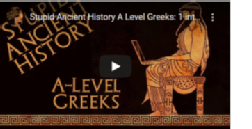 Stupid Ancient History - Greek Relations
Stupid Ancient History - Greek Relations
Dave Midgley and Helen Taylor are Director of Humanities and Head of History respectively at Parrs Wood High School and teach Ancient History at GCSE and A Level. Stupid Ancient History is a series of video/blogs which can be accessed via Youtube or the WCN stoa site.
The Politics and Society of Sparta, 478-404BC
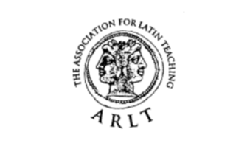 Notes for teachers on Sparta available in the JACT Ancient History Notes on the Teachers’ section of the ARLT website (free log-in required from ARLT for teachers) – www.arlt.co.uk. Although these were written for the previous specification, information on the key sources remains very useful. Info.
Notes for teachers on Sparta available in the JACT Ancient History Notes on the Teachers’ section of the ARLT website (free log-in required from ARLT for teachers) – www.arlt.co.uk. Although these were written for the previous specification, information on the key sources remains very useful. Info.
The Politics and Culture of Athens, c.460-399BC
AIE resources illustrate the relevance of ancient Athenian inscriptions, especially those of the classical period (the fifth and fourth centuries BC, c. 500-300 BC), to pre-18 education in the UK and beyond. They aim to support teachers who wish to introduce inscriptions into their teaching as a way of captivating their students’ imagination and fostering enthusiasm for the ancient Greek world.
These resources, consisting of teachers’ notes and slides for classes, underline the textual and visual potential of inscriptions for those engaged with learning about ancient Greek history and civilisation. The idea of an inscription being carved and read “in real life” is a way of fostering the curiosity of students about the past. Accordingly, through inscriptions, learners benefit from the bringing to life of the ancient world, perhaps in a way that helps it seem less abstract and initially less complicated. At the same time, they hope that introducing students at pre-18 level to inscriptions will encourage them to explore ancient source material of their own accord, and will help them to ‘bridge the gap’ into University study if they chose to pursue it. In their Introduction to AIE for Teachers resource you will find more ideas about using inscriptions in the classroom. They also offer a set of slides which introduce learners of all ages to Greek inscriptions: see Introduction to ancient Athenian inscriptions.
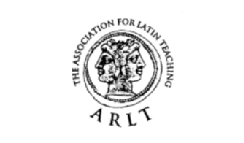 Notes for teachers on the Delian League and Culture of Athens available in the JACT Ancient History Notes on the Teachers’ section of the ARLT website (free log-in required from ARLT for teachers) – www.arlt.co.uk. Although these were written for the previous specification, information on the key sources remains very useful. Info.
Notes for teachers on the Delian League and Culture of Athens available in the JACT Ancient History Notes on the Teachers’ section of the ARLT website (free log-in required from ARLT for teachers) – www.arlt.co.uk. Although these were written for the previous specification, information on the key sources remains very useful. Info.
The Rise of Macedon, 359-323BC
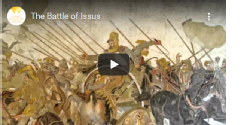 Videos created by Warwick Uni students for the module Hellenistic World. Info.
Videos created by Warwick Uni students for the module Hellenistic World. Info.
Rome Period Study: The Julio-Claudian Emperors, 31 BC–AD 68

Peter Wright of Blackpool Sixth has created some videos for the Julio-Claudian Emperors module. Peter has worked closely with Classics for All and the WCN in creating a suite of resources across the OCR Classics and Ancient History curricula. You can find out more about Ancient History at Blackpool Sixth through their Twitter, and check out Peter's own Twitter account and Youtube Channel for more content. Includes Lesson Plans and information.
Ancient Rome Live - A free educational learning platform including short videos on topics related to Ancient Rome, including people, monuments, important places, historic dates, museums and exhibits, and cities of the Roman Empire. Also now offering free online seminars. Info.
 Notes for teachers on Augustus (with ideas for lesson plans) available in the JACT Ancient History Notes on the Teachers’ section of the ARLT website (free log-in required from ARLT for teachers) – www.arlt.co.uk. Although these were written for the previous specification, information on the key sources remains very useful. Includes Lesson Plans and information.
Notes for teachers on Augustus (with ideas for lesson plans) available in the JACT Ancient History Notes on the Teachers’ section of the ARLT website (free log-in required from ARLT for teachers) – www.arlt.co.uk. Although these were written for the previous specification, information on the key sources remains very useful. Includes Lesson Plans and information.
The Breakdown of the Late Republic, 88–31 BC
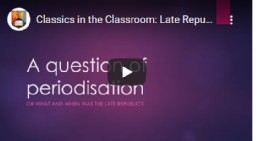 Part of the Birmingham Uni Classics in the Classroom project – Late Republic. The project aims to provide teachers with educational materials which will be closely related to the content of the OCR Classics specifications and will be freely available online. The first pack of materials presented here is dedicated to the Late Roman Republic, a subject covered in both the A-Level Classical Civilisation syllabus and the A-Level Ancient History syllabus. The pack contains a series of videos as well as notes to teachers, slides and workbooks for pupils, all of which are downloadable and ready to use in the classroom. Includes Lesson Plans.
Part of the Birmingham Uni Classics in the Classroom project – Late Republic. The project aims to provide teachers with educational materials which will be closely related to the content of the OCR Classics specifications and will be freely available online. The first pack of materials presented here is dedicated to the Late Roman Republic, a subject covered in both the A-Level Classical Civilisation syllabus and the A-Level Ancient History syllabus. The pack contains a series of videos as well as notes to teachers, slides and workbooks for pupils, all of which are downloadable and ready to use in the classroom. Includes Lesson Plans.
Ancient Rome Live - A free educational learning platform including short videos on topics related to Ancient Rome, including people, monuments, important places, historic dates, museums and exhibits, and cities of the Roman Empire. Also now offering free online seminars. Info.
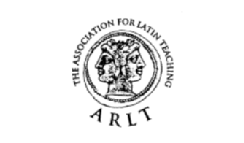 Notes for teachers on Cicero and Republic (with ideas for lesson plans) available in the JACT Ancient History Notes on the Teachers’ section of the ARLT website (free log-in required from ARLT for teachers) – www.arlt.co.uk. Although these were written for the previous specification, information on the key sources remains very useful. Info.
Notes for teachers on Cicero and Republic (with ideas for lesson plans) available in the JACT Ancient History Notes on the Teachers’ section of the ARLT website (free log-in required from ARLT for teachers) – www.arlt.co.uk. Although these were written for the previous specification, information on the key sources remains very useful. Info.
The Flavians, AD 68–96
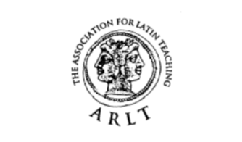 Notes for teachers on Imperial Rome (31 BCE- 96 CE) and Empire (14-117 CE) available in the JACT Ancient History Notes on the Teachers’ section of the ARLT website (free log-in required from ARLT for teachers) – www.arlt.co.uk. Although these were written for the previous specification, information on the key sources remains very useful. Info.
Notes for teachers on Imperial Rome (31 BCE- 96 CE) and Empire (14-117 CE) available in the JACT Ancient History Notes on the Teachers’ section of the ARLT website (free log-in required from ARLT for teachers) – www.arlt.co.uk. Although these were written for the previous specification, information on the key sources remains very useful. Info.
Ruling Roman Britain, AD 43–c.128
 Notes for teachers within a planned schedule on Roman Britain available in the JACT Ancient History Notes on the Teachers’ section of the ARLT website (free log-in required from ARLT for teachers) – www.arlt.co.uk. Although these were written for the previous specification, information on the key sources remains very useful. Info.
Notes for teachers within a planned schedule on Roman Britain available in the JACT Ancient History Notes on the Teachers’ section of the ARLT website (free log-in required from ARLT for teachers) – www.arlt.co.uk. Although these were written for the previous specification, information on the key sources remains very useful. Info.
A-Level (KS5) Classical Civilisation
The Warwick Classics Dept hold an annual Class Civ A-level Teachers Day. You can find the videos of lectures and Q&As from our 2020 event here, as well as lectures from our 2019 event.
The World of the Hero
Homer's Iliad/Odyssey
Virgil's Aeneid
Culture and the Arts
Greek Theatre
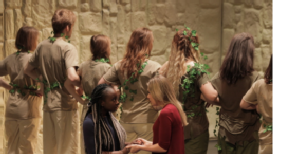
The Warwick Ancient Drama Festival is a yearly event which gathers together pupils and teachers from all over the country. For the Drama Festival website we have collated a large number of resources, including videos, blogs, essays, interviews and much more. These resources are best navigated using the Warwick Ancient Drama Festival site. Recent productions have included Medea, Antigone, Lysistrata. In 2019 we performed Aristophanes' comedy Frogs and in 2020 Sophocles' Oedipus Rex. info: Warwick Class Civ Day 2019 and 2020 lectures. Information.
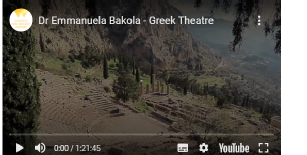 Warwick University's Dr Emmanuela Bakola has created a swathe of resources to complement the annual Ancient Drama Festival and our school and Teachers Days. You can access Dr Bakola's PowerPoints on Frogs, The Bacchae, and Oedipus Tyrannus here, as well as her Encyclopedia entry about Dionysus in Greek comedy. Information.
Warwick University's Dr Emmanuela Bakola has created a swathe of resources to complement the annual Ancient Drama Festival and our school and Teachers Days. You can access Dr Bakola's PowerPoints on Frogs, The Bacchae, and Oedipus Tyrannus here, as well as her Encyclopedia entry about Dionysus in Greek comedy. Information.

Notes for teachers on Culture of Athens available in the JACT Ancient History Notes on the Teachers’ section of the ARLT website (free log-in required from ARLT for teachers) – www.arlt.co.uk. Although these were written for the previous specification and for ancient history, information on the key sources remains very useful. Info.
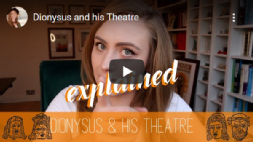 Millennial Classicist. Excellent set of videos on Greek Theatre created by Maria Haley. Her YouTube channel has many more videos on various topics
Millennial Classicist. Excellent set of videos on Greek Theatre created by Maria Haley. Her YouTube channel has many more videos on various topics
Information.
Imperial Image
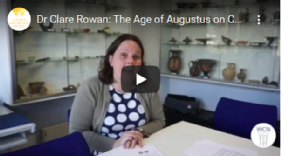 Prescribed Visual/Material Sources - Coins. In these two videos Dr Clare Rowan discusses coins in the age of Augustus, particularly focussing on the coins studied as part of the OCR Classical Civilisation A-level module ‘Imperial Image’. Information.
Prescribed Visual/Material Sources - Coins. In these two videos Dr Clare Rowan discusses coins in the age of Augustus, particularly focussing on the coins studied as part of the OCR Classical Civilisation A-level module ‘Imperial Image’. Information.
Prescribed Visual/Material Sources - Videos. Peter Wright of Blackpool Sixth has created some videos in his inimitable style (check out the music) for the Myth and Religion module.
You can find out more about Ancient History at Blackpool Sixth through their Twitter, and check out Peter's own Twitter account and Youtube Channel for more content. Information.
Invention of the Barbarian
 AIE resources illustrate the relevance of ancient Athenian inscriptions, especially those of the classical period (the fifth and fourth centuries BC, c. 500-300 BC), to pre-18 education in the UK and beyond. They aim to support teachers who wish to introd
AIE resources illustrate the relevance of ancient Athenian inscriptions, especially those of the classical period (the fifth and fourth centuries BC, c. 500-300 BC), to pre-18 education in the UK and beyond. They aim to support teachers who wish to introd
These resources, consisting of teachers’ notes and slides for classes, underline the textual and visual potential of inscriptions for those engaged with learning about ancient Greek history and civilisation. The idea of an inscription being carved and read “in real life” is a way of fostering the curiosity of students about the past. Accordingly, through inscriptions, learners benefit from the bringing to life of the ancient world, perhaps in a way that helps it seem less abstract and initially less complicated. At the same time, they hope that introducing students at pre-18 level to inscriptions will encourage them to explore ancient source material of their own accord, and will help them to ‘bridge the gap’ into University study if they chose to pursue it. In their Introduction to AIE for Teachers resource you will find more ideas about using inscriptions in the classroom. They also offer a set of slides which introduce learners of all ages to Greek inscriptions: see Introduction to ancient Athenian inscriptions.uce inscriptions into their teaching as a way of captivating their students’ imagination and fostering enthusiasm for the ancient Greek world.
Greek Art
OCR Greek Art A-level Syllabus Pieces. Francesca Grilli from Runshaw College has created an amazing set of videos and allowed us to use them as part of the WCN/Classics for All resource collaboration. Francesca is Course Leader for Classics at Runshaw College in Leyland. For more info about Runshaw Classics follow them on Twitter @RunshawClassics, Instagram, or subscribe to their Youtube Channel. Can be viewed as part of the WCN A-level Greek Art resources. Info.
AIE resources illustrate the relevance of ancient Athenian inscriptions, especially those of the classical period (the fifth and fourth centuries BC, c. 500-300 BC), to pre-18 education in the UK and beyond. They aim to support teachers who wish to introduce inscriptions into their teaching as a way of captivating their students’ imagination and fostering enthusiasm for the ancient Greek world.
These resources, consisting of teachers’ notes and slides for classes, underline the textual and visual potential of inscriptions for those engaged with learning about ancient Greek history and civilisation. The idea of an inscription being carved and read “in real life” is a way of fostering the curiosity of students about the past. Accordingly, through inscriptions, learners benefit from the bringing to life of the ancient world, perhaps in a way that helps it seem less abstract and initially less complicated. At the same time, they hope that introducing students at pre-18 level to inscriptions will encourage them to explore ancient source material of their own accord, and will help them to ‘bridge the gap’ into University study if they chose to pursue it. In their Introduction to AIE for Teachers resource you will find more ideas about using inscriptions in the classroom. They also offer a set of slides which introduce learners of all ages to Greek inscriptions: see Introduction to ancient Athenian inscriptions.
Beliefs and Ideas
Greek Religion
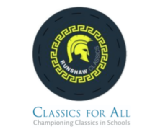 Myth and Religion Prescribed Visual/Material Sources GCSE videos and OCR Greek Art A-level Syllabus Pieces. Francesca Grilli from Runshaw College has created an amazing set of videos and allowed us to use them as part of the WCN/Classics for All resource collaboration. Francesca is Course Leader for Classics at Runshaw College in Leyland. For more info about Runshaw Classics follow them on Twitter @RunshawClassics, Instagram, or subscribe to their Youtube Channel. The videos have content relevant to the study of Myth and Religion at GCSE and A-level and include some of the prescribed visual and material sources for OCR Class Civ GCSE. Info.
Myth and Religion Prescribed Visual/Material Sources GCSE videos and OCR Greek Art A-level Syllabus Pieces. Francesca Grilli from Runshaw College has created an amazing set of videos and allowed us to use them as part of the WCN/Classics for All resource collaboration. Francesca is Course Leader for Classics at Runshaw College in Leyland. For more info about Runshaw Classics follow them on Twitter @RunshawClassics, Instagram, or subscribe to their Youtube Channel. The videos have content relevant to the study of Myth and Religion at GCSE and A-level and include some of the prescribed visual and material sources for OCR Class Civ GCSE. Info.
AIE resources illustrate the relevance of ancient Athenian inscriptions, especially those of the classical period (the fifth and fourth centuries BC, c. 500-300 BC), to pre-18 education in the UK and beyond. They aim to support teachers who wish to introduce inscriptions into their teaching as a way of captivating their students’ imagination and fostering enthusiasm for the ancient Greek world.
These resources, consisting of teachers’ notes and slides for classes, underline the textual and visual potential of inscriptions for those engaged with learning about ancient Greek history and civilisation. The idea of an inscription being carved and read “in real life” is a way of fostering the curiosity of students about the past. Accordingly, through inscriptions, learners benefit from the bringing to life of the ancient world, perhaps in a way that helps it seem less abstract and initially less complicated. At the same time, they hope that introducing students at pre-18 level to inscriptions will encourage them to explore ancient source material of their own accord, and will help them to ‘bridge the gap’ into University study if they chose to pursue it. In their Introduction to AIE for Teachers resource you will find more ideas about using inscriptions in the classroom. They also offer a set of slides which introduce learners of all ages to Greek inscriptions: see Introduction to ancient Athenian inscriptions.
Love & Relationships
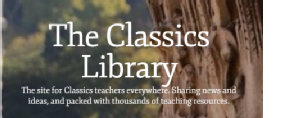 Love and Relationships Scheme of Work by Alice Barrett - requires Classics Library log in. Includes Lesson Plans.
Love and Relationships Scheme of Work by Alice Barrett - requires Classics Library log in. Includes Lesson Plans.
LP: Love and Relationship booklets A and B Natasha Roston - requires Classics Library log in. Includes Lesson Plans.
Politics of the Late Republic
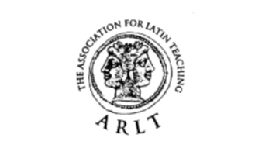 Notes for teachers on Cicero available in the JACT Ancient History Notes on the Teachers’ section of the ARLT website (free log-in required from ARLT for teachers). Although these were written for the previous specification and for ancient history, information on the key sources remains very useful. Info.
Notes for teachers on Cicero available in the JACT Ancient History Notes on the Teachers’ section of the ARLT website (free log-in required from ARLT for teachers). Although these were written for the previous specification and for ancient history, information on the key sources remains very useful. Info.
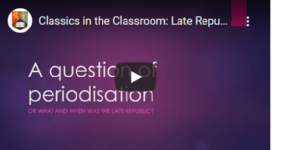 Part of the Birmingham Uni Classics in the Classroom project – Late Republic. The project aims to provide teachers with educational materials which will be closely related to the content of the OCR Classics specifications and will be freely available online. The first pack of materials presented here is dedicated to the Late Roman Republic, a subject covered in both the A-Level Classical Civilisation syllabus and the A-Level Ancient History syllabus. The pack contains a series of videos as well as notes to teachers, slides and workbooks for pupils, all of which are downloadable and ready to use in the classroom. Includes Lesson Plans.
Part of the Birmingham Uni Classics in the Classroom project – Late Republic. The project aims to provide teachers with educational materials which will be closely related to the content of the OCR Classics specifications and will be freely available online. The first pack of materials presented here is dedicated to the Late Roman Republic, a subject covered in both the A-Level Classical Civilisation syllabus and the A-Level Ancient History syllabus. The pack contains a series of videos as well as notes to teachers, slides and workbooks for pupils, all of which are downloadable and ready to use in the classroom. Includes Lesson Plans.
Democracy and the Athenians
AIE resources illustrate the relevance of ancient Athenian inscriptions, especially those of the classical period (the fifth and fourth centuries BC, c. 500-300 BC), to pre-18 education in the UK and beyond. They aim to support teachers who wish to introduce inscriptions into their teaching as a way of captivating their students’ imagination and fostering enthusiasm for the ancient Greek world.
These resources, consisting of teachers’ notes and slides for classes, underline the textual and visual potential of inscriptions for those engaged with learning about ancient Greek history and civilisation. The idea of an inscription being carved and read “in real life” is a way of fostering the curiosity of students about the past. Accordingly, through inscriptions, learners benefit from the bringing to life of the ancient world, perhaps in a way that helps it seem less abstract and initially less complicated. At the same time, they hope that introducing students at pre-18 level to inscriptions will encourage them to explore ancient source material of their own accord, and will help them to ‘bridge the gap’ into University study if they chose to pursue it. In their Introduction to AIE for Teachers resource you will find more ideas about using inscriptions in the classroom. They also offer a set of slides which introduce learners of all ages to Greek inscriptions: see Introduction to ancient Athenian inscriptions.
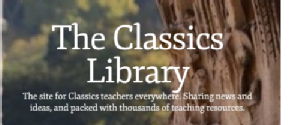 Requires Classics Library log-in.
Requires Classics Library log-in.
Democracy and the Athenians Emma Othen’s subject powerpoints
Includes Lesson Plans.
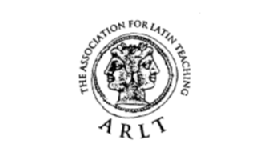 Notes for teachers on Democracy and Culture of Athens available in the JACT Ancient History Notes on the Teachers’ section of the ARLT website (free log-in required from ARLT for teachers) – www.arlt.co.uk. Although these were written for the previous specification and for ancient history, information on the key sources remains very useful. Information.
Notes for teachers on Democracy and Culture of Athens available in the JACT Ancient History Notes on the Teachers’ section of the ARLT website (free log-in required from ARLT for teachers) – www.arlt.co.uk. Although these were written for the previous specification and for ancient history, information on the key sources remains very useful. Information.

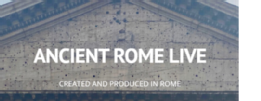

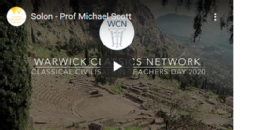
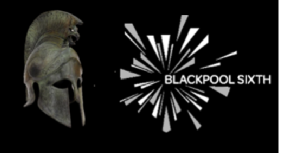
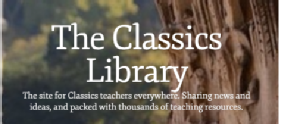 Requires
Requires